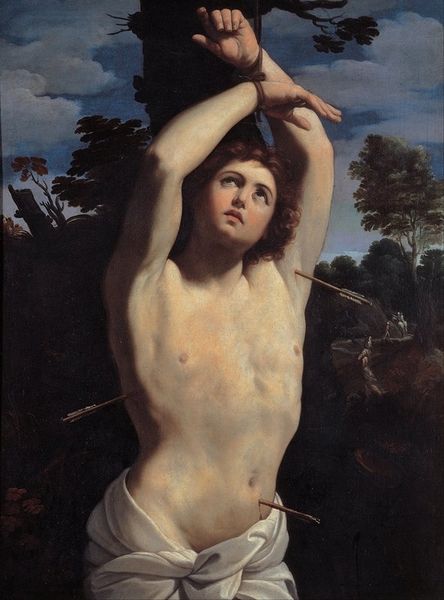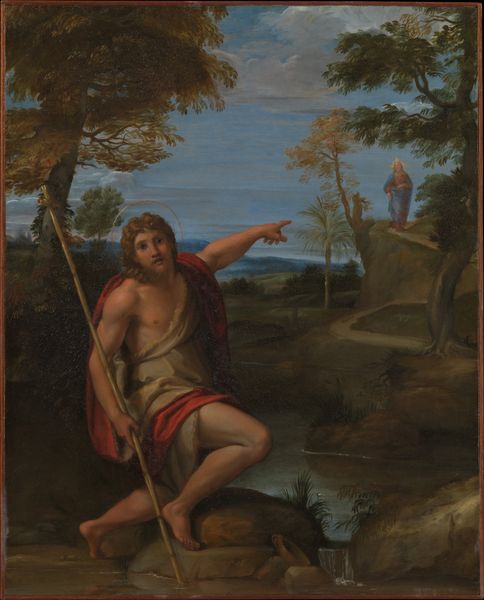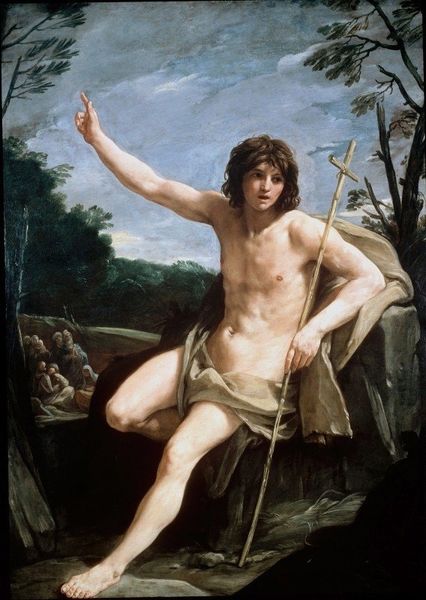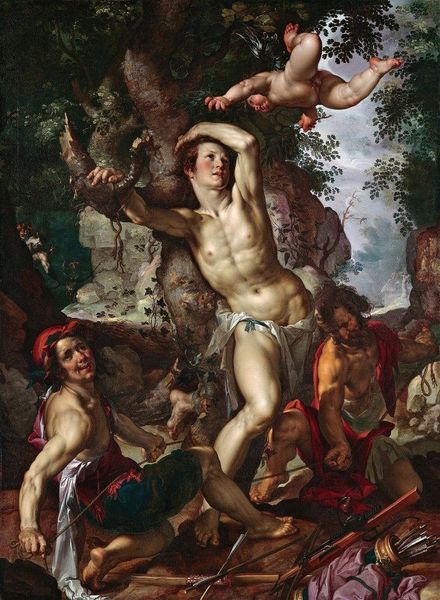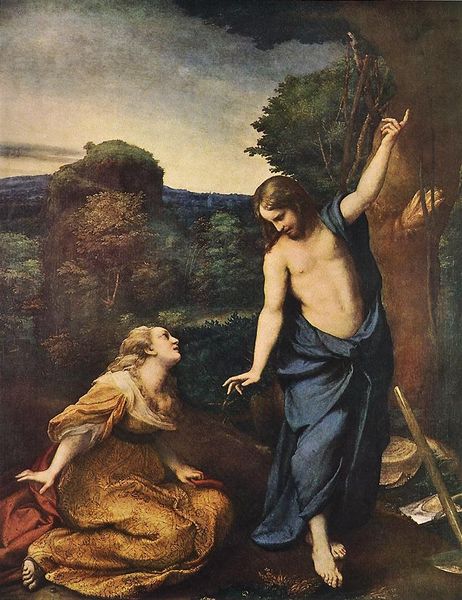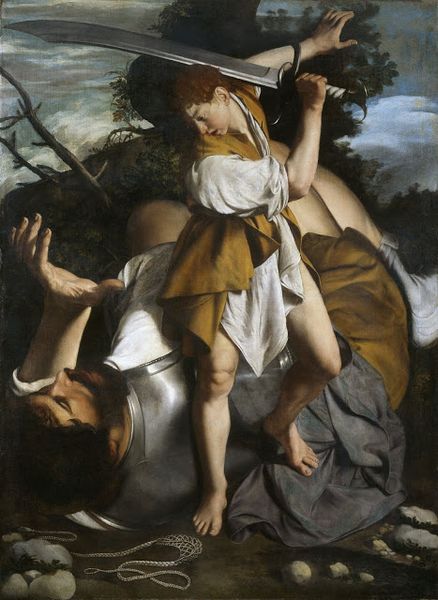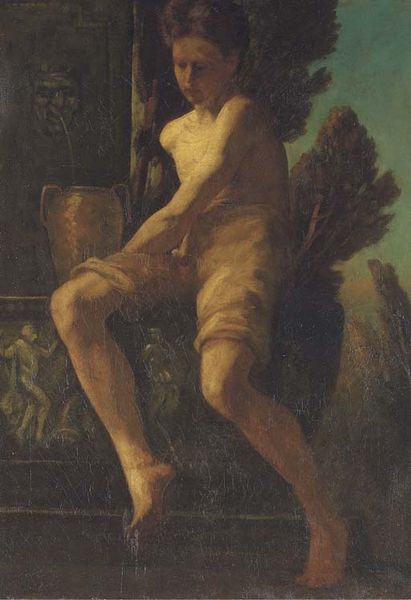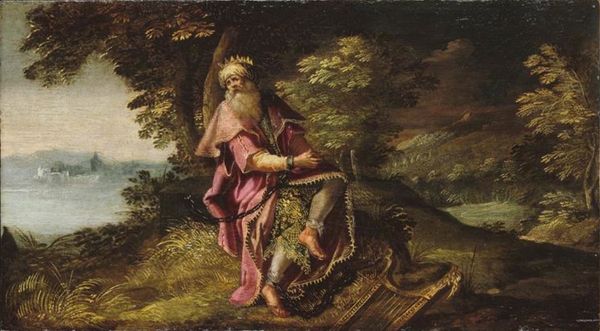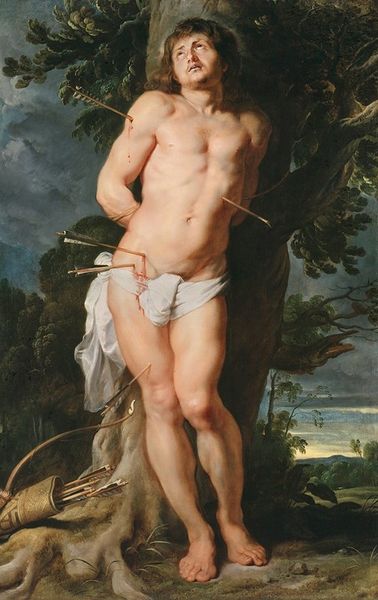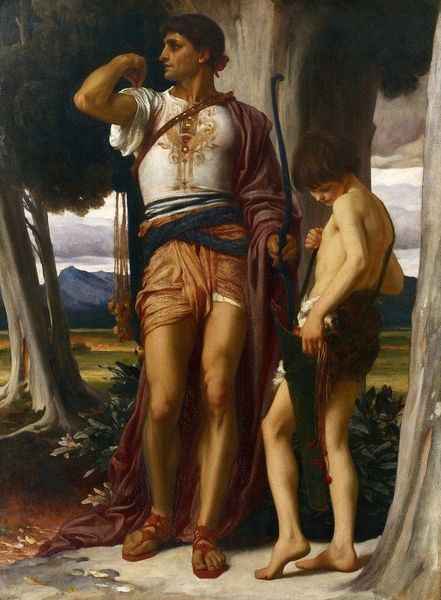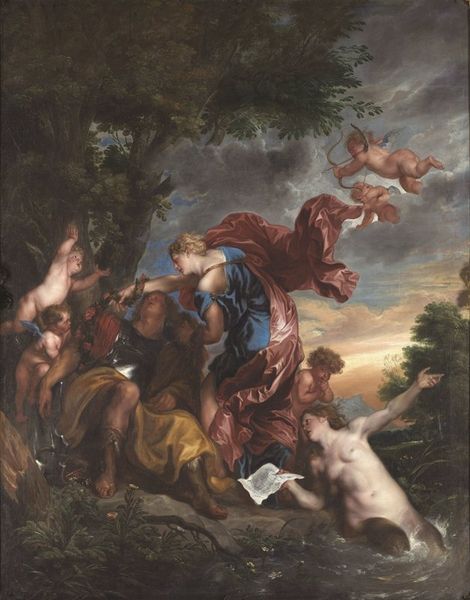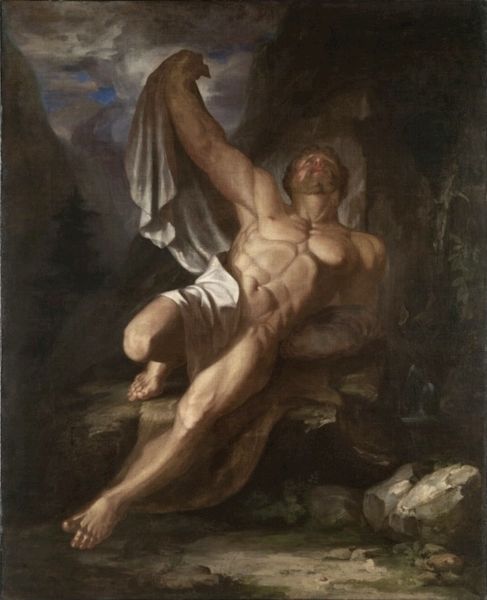
painting, oil-paint
#
baroque
#
painting
#
oil-paint
#
landscape
#
figuration
#
history-painting
#
nude
Copyright: Public Domain: Artvee
Editor: So here we have Velázquez's "Saint John the Baptist in the Wilderness," painted around 1622, rendered in oil. It’s quite striking how grounded the figure seems despite the classical, almost idealized depiction. What is your take on this piece? Curator: Considering this within its historical context, it's interesting to examine Velázquez's visual rhetoric and what he's saying about the Church’s role at the time. This painting deviates quite substantially from the standard depiction of Saint John, and these changes seem purposeful. Why do you think that is? Editor: Perhaps to make him seem more human, more relatable than divine? The common Baroque practice would've been grander? Curator: Precisely. Think about the Counter-Reformation. There was immense pressure on artists to reaffirm faith but to make the subject accessible, while imbuing it with an understanding of how society could influence even something as personal as faith. Look at the unidealized form, the almost gritty realism, then the inclusion of the lamb… Editor: As a symbol? I can see that. By bringing Saint John ‘down to earth,’ Velázquez speaks to a societal shift in how people are encouraged to perceive and practice religion. Curator: Exactly! How does that change your perception of the painting? Editor: It re-frames it. The figure of Saint John then is less an untouchable ideal, and more someone engaged in the human project. Curator: Indeed, Velázquez isn't merely depicting a saint; he is prompting the audience to consider the complex intersection between religious dogma and contemporary experience. A reflection of his, and society’s evolving worldview. Editor: I hadn't thought of it in those terms before. Seeing art through the lens of its socio-political context is definitely a great way to gain new appreciation of it. Curator: Precisely! The politics of imagery offer compelling perspectives.
Comments
No comments
Be the first to comment and join the conversation on the ultimate creative platform.
